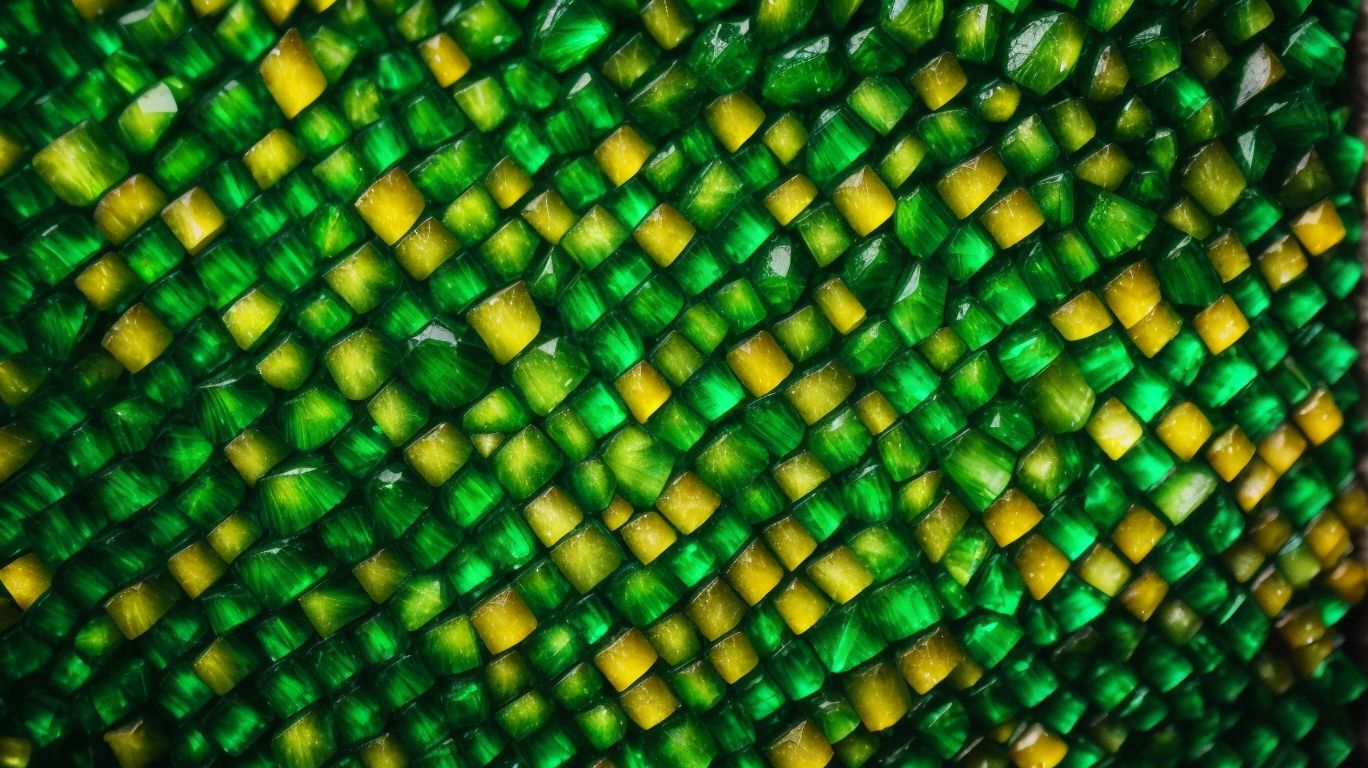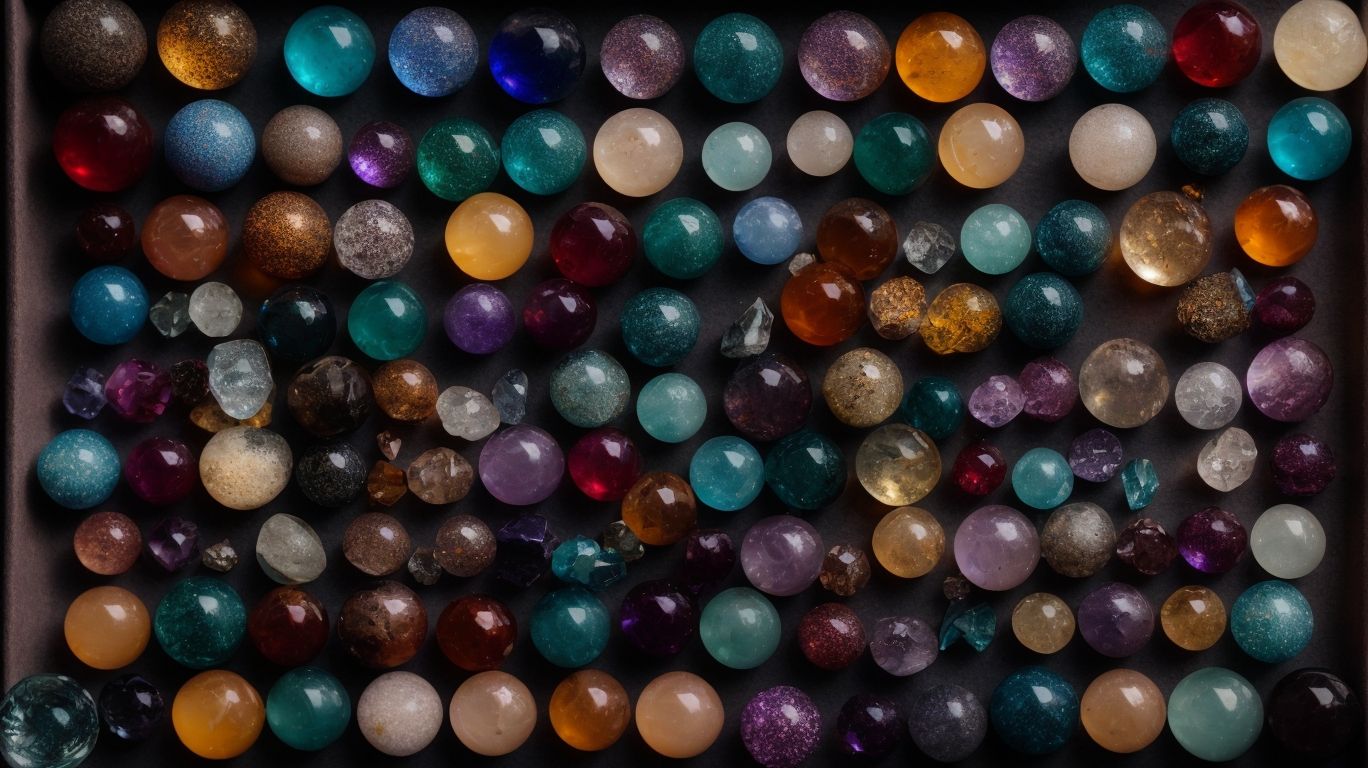
Nature’s Mosaic: A Deep Dive into Green and Yellow Crystals
In the world of gemstones and minerals, green and yellow crystals stand out as captivating and vibrant specimens. Their unique properties, formations, and uses have intrigued and inspired individuals for centuries. In this comprehensive guide, we will explore the intriguing world of green and yellow crystals, delving into their properties, formations, types, uses, healing and spiritual significance, as well as practical tips for incorporating them into your life. From meditation to feng shui and jewelry, we will uncover the various ways to harness the power and beauty of these crystals. We will address safety precautions, cleaning and care, and where to find these remarkable treasures. Join us on this immersive journey as we unravel the enchanting allure of green and yellow crystals and discover the profound impact they can have on our lives.
What Are Green and Yellow Crystals?
Green and yellow crystals are exquisite examples of nature’s mosaic, showcasing the geological wonder and natural beauty of Earth’s elements.
Their luminous hues capture the essence of sunlight, reminiscent of dappled forest canopies and golden meadows. These crystals exhibit a radiant transparency, reflecting the intricacies of the natural world. Their eco-friendly nature aligns with sustainable living, making them an environmentally conscious choice. Formed through geological processes over millennia, these crystals hold a timeless appeal that resonates with the earth’s rich history and its awe-inspiring formations.
What Are Their Properties?
Green and yellow crystals possess unique properties stemming from their crystal formations and organic origins, showcasing a diverse color spectrum and eco-friendly characteristics.
Their mineralogy dictates their luster, with green crystals often exhibiting a vibrant sheen due to their high chlorite content, while yellow crystals present a gleaming hue owing to the presence of sulfur compounds. The crystallographic patterns of these crystals reveal intricate geometric arrangements, with green crystals commonly forming in hexagonal prisms and yellow crystals displaying a variety of crystal habits such as tabular or pyramidal structures. The geological processes involved in their formation, including hydrothermal activity and metamorphism, contribute to their distinct growth and unique crystalline structures.
How Are Green and Yellow Crystals Formed?
The formation process of green and yellow crystals is a fascinating journey deep within the subterranean realms, influenced by geological formations and organic chemistry, resulting in remarkable crystallographic symmetry and stunning gemstone properties.
These striking crystals originate from the interplay of diverse geological processes, such as igneous and metamorphic activities, which create the perfect conditions for mineral deposition. The arrangement of crystallographic patterns within these crystals reveals a mesmerizing symmetry, where the organic chemistry of elements such as chromium and iron imparts their distinctive hues. Understanding the intricate dance between geological formations and organic compounds unravels the enchanting origins and unique properties of these vibrant crystals.
What Are the Different Types of Green and Yellow Crystals?
The spectrum of green and yellow crystals encompasses various types, each displaying distinct natural patterns and geological context, characterized by intricate crystallographic growth and mesmerizing features.
These crystals derive their unique hues and formations from a combination of mineral composition, environmental conditions, and the process of formation deep within the Earth’s crust. Green crystals, such as emerald and jade, are often associated with specific geological occurrences, while yellow crystals like citrine and yellow calcite are known for their vibrant color variations and distinctive crystal structures. The variations within these crystal formations offer a rich tapestry of natural beauty that continues to fascinate geologists, collectors, and crystal enthusiasts alike.
What Are the Uses of Green and Yellow Crystals?
Green and yellow crystals serve multifaceted purposes, aligning with eco-friendly and sustainable practices, while showcasing the geological wonders through their distinct crystallographic patterns, growth, and characteristics.
These crystals find applications in various industries, from renewable energy technologies to environmentally friendly construction materials. Their unique crystalline structures and properties make them ideal for use in solar panels, where they can efficiently harness sunlight and convert it into clean energy. Their vibrant colors and natural appeal make them popular choices for jewelry and decorative pieces, adding a touch of sustainability and elegance to everyday items.
Whether in the form of quartz, peridot, or citrine, these crystals continue to demonstrate their versatility and relevance in modern eco-conscious society.
What Are the Healing Properties of Green and Yellow Crystals?
Green and yellow crystals are revered for their healing properties, intertwining with the environmental and organic elements, characterized by their crystallographic symmetry, unique properties, and geological examinations.
These crystals exhibit remarkable abilities to harmonize with the natural world, drawing upon geological formations and earth energies. Their organic connection is deeply rooted in the earth’s processes, forging a profound resonance with nature and life force.
When harnessed for healing, green and yellow crystals tap into the innate energy of the earth, amplifying their therapeutic significance. Geological studies have validated their unique properties, reinforcing their ability to promote balance and vitality.
What Are the Spiritual Meanings of Green and Yellow Crystals?
The spiritual meanings associated with green and yellow crystals are deeply rooted in their prismatic nature, transparency, and the intricate interplay of crystallographic patterns, growth, symmetry, and features.
These crystals symbolize the renewal of life and nature, representing growth, abundance, and harmony. Green crystals, such as jade and aventurine, are associated with heart chakras and are believed to promote healing, balance, and compassion, while yellow crystals like citrine are linked to the solar plexus chakra and are thought to enhance confidence, self-expression, and creativity.
Their vibrant colors are often seen as a reflection of the rejuvenating and energizing qualities they bring, offering a connection to the earth’s natural energy and life force.
How Can You Incorporate Green and Yellow Crystals into Your Life?
Incorporating green and yellow crystals into your life introduces a luminous and radiant energy stemming from their subterranean origins, unique crystal formations, and captivating geological wonders, encompassing their distinctive crystallographic characteristics.
These crystals hold a mesmerizing allure that can transform your surroundings, infusing them with a vibrant and revitalizing aura. The earthy green hues evoke feelings of renewal and growth, while the sunny yellow tones symbolize joy and positivity.
Whether worn as jewelry, placed in your living space, or used during meditation, these crystals can serve as potent reminders of the natural beauty and resilience found in the depths of the earth. Embracing their energy can bring a harmonizing balance into your daily experiences, connecting you with the profound forces of nature.
How to Use Green and Yellow Crystals in Meditation
Using green and yellow crystals in meditation involves connecting with their inherent energy, embracing their crystallographic growth, features, and the expansive geological context encapsulated in their crystallographic arrangement.
These crystals are revered for their ability to channel the vibrational frequencies of the earth, fostering a deep sense of grounding and balance during meditation. Green crystals, such as emerald and jade, are associated with the heart chakra, promoting healing and harmony. Similarly, yellow crystals like citrine and yellow calcite resonate with the solar plexus chakra, empowering personal will and confidence.
By incorporating these crystals into your meditation practice, you can enhance the energetic connections and align with their rejuvenating properties, fostering a profound sense of spiritual renewal and tranquility.
How to Use Green and Yellow Crystals in Feng Shui
Integrating green and yellow crystals in Feng Shui practice involves harnessing their unique energy, distinctive crystallographic characteristics, patterns, symmetry, and growth to create harmonious environmental arrangements.
These crystals are believed to emit specific energies that can bring balance, prosperity, and vitality to spaces. The lush green hues of crystals like malachite and aventurine symbolize growth, abundance, and renewal, while the radiant yellow tones of citrine and yellow calcite are associated with joy, optimism, and manifestation. Their crystallographic structures and growth patterns are thought to amplify these energetic properties, enhancing the flow of positive chi, or vital energy, throughout a space.
How to Use Green and Yellow Crystals in Jewelry
Incorporating green and yellow crystals in jewelry design involves showcasing their elegance as gemstones, emphasizing their elemental composition, captivating coloration, unique crystallographic properties, and the geological phenomena that give them their allure.
These vibrant crystals, such as peridot, tourmaline, citrine, and green amber, beckon with their alluring hues, drawing inspiration from the lush landscapes of nature. Their elemental composition, featuring elements like iron, manganese, and silicon, reflects the earth’s abundance and diversity. The intricate crystallographic structures showcase their natural formation and inherent beauty, creating a mesmerizing spectacle in jewelry settings.
Understanding the geological phenomena that contribute to their formation adds an enchanting layer to the narrative of these crystals, elevating their appeal in jewelry design.
What Are the Safety Precautions When Using Green and Yellow Crystals?
While using green and yellow crystals, it is essential to appreciate their radiant and transparent qualities while understanding the significance of crystallographic patterns, the mineral formation process, and their distinctive crystallographic features to ensure safe and respectful handling.
These crystals are formed through geological processes, resulting in unique structures and patterns that make them fascinating to observe. When handling them, it’s important to use protective gear to prevent skin contact and inhalation of particles. Being mindful of their sharp edges and fragile nature, gentle handling is crucial to avoid fractures and splinters. Storing them in a secure and cushioned container will help maintain their integrity. By respecting these safety precautions, enthusiasts can fully enjoy the beauty of these crystals while prioritizing their well-being.
How to Clean and Care for Green and Yellow Crystals?
Cleaning and caring for green and yellow crystals entails an understanding of their delicate crystallographic symmetry, growth, the insights from geological analysis, and the unique characteristics contributing to their crystal growth and maintenance.
These crystals are known for their intricate internal structure, which requires gentle handling during cleaning to preserve their natural beauty.
When cleaning green and yellow crystals, it’s essential to use a soft-bristled brush, lukewarm water, and mild soap to avoid damaging their delicate surfaces. It’s advisable to avoid exposing these crystals to direct sunlight for extended periods to prevent any potential color fading.
This care regime, when followed diligently, ensures the preservation of their unique geological and aesthetic qualities.
Where Can You Find Green and Yellow Crystals?
Discovering green and yellow crystals involves exploring geological formations, subterranean environments, and the distinct crystallographic growth and characteristics that manifest in specific geological locations where these crystals can be found.
These unique crystals are often found in sedimentary rock formations, particularly in regions rich in mineral deposits. The subterranean environments where these crystals form play a crucial role in their development, with factors such as pressure, temperature, and mineral composition influencing their distinct properties. Their striking hues often result from trace elements or impurities during the crystal’s growth process.
In certain geological locations, such as limestone caves or volcanic areas, the formation of green and yellow crystals is a testament to the Earth’s geological history and the intricate processes that produce these appealing natural wonders.




No Comments